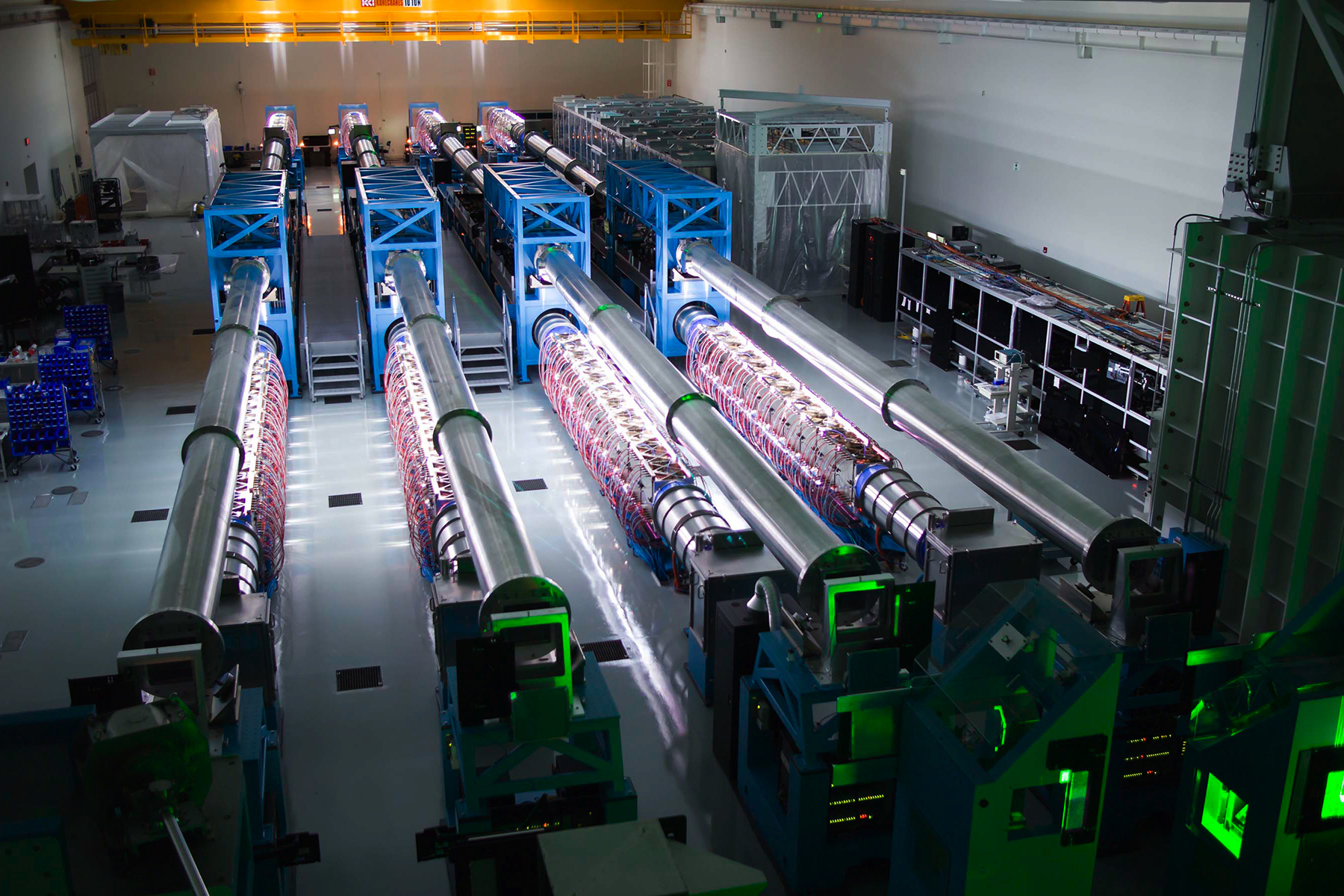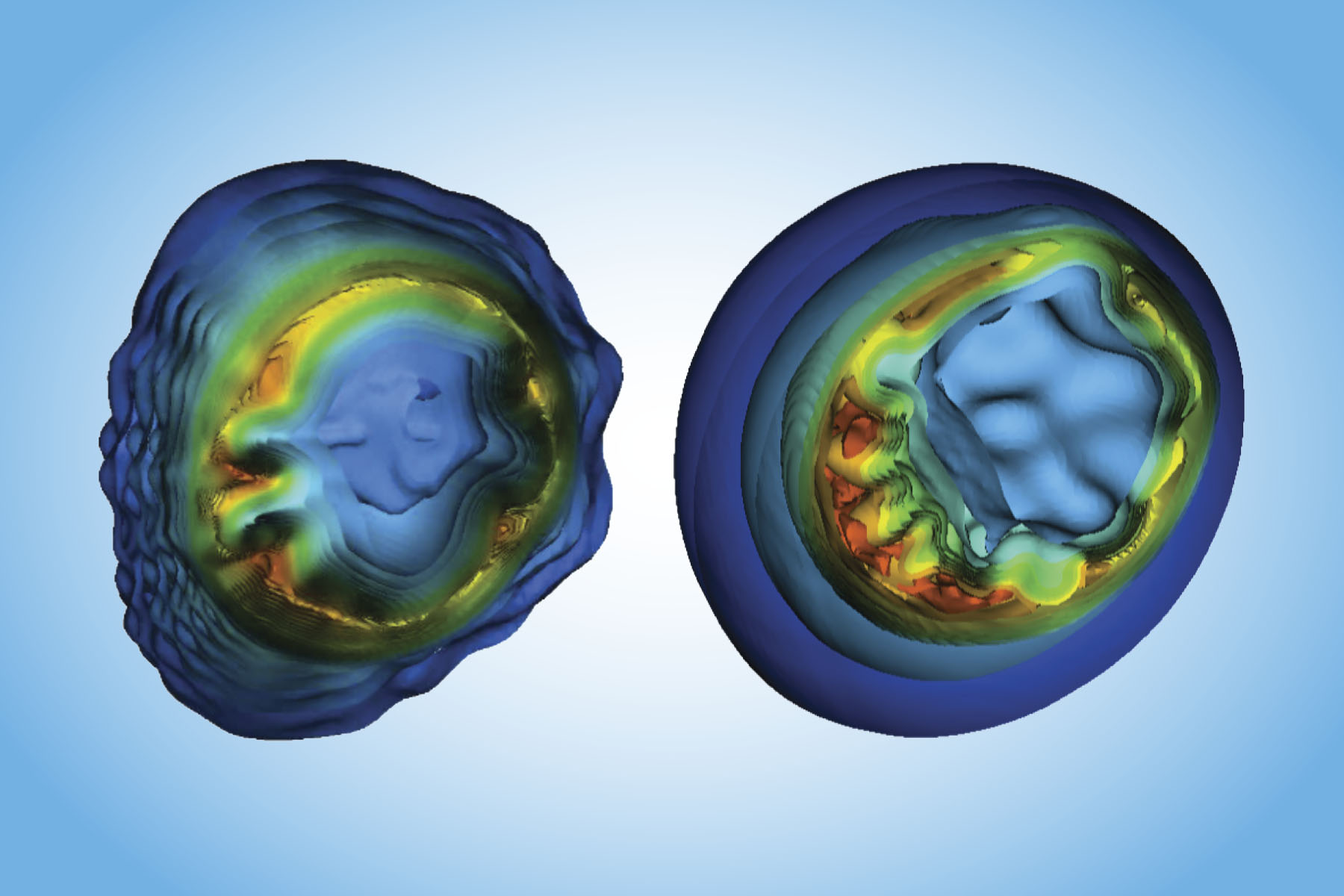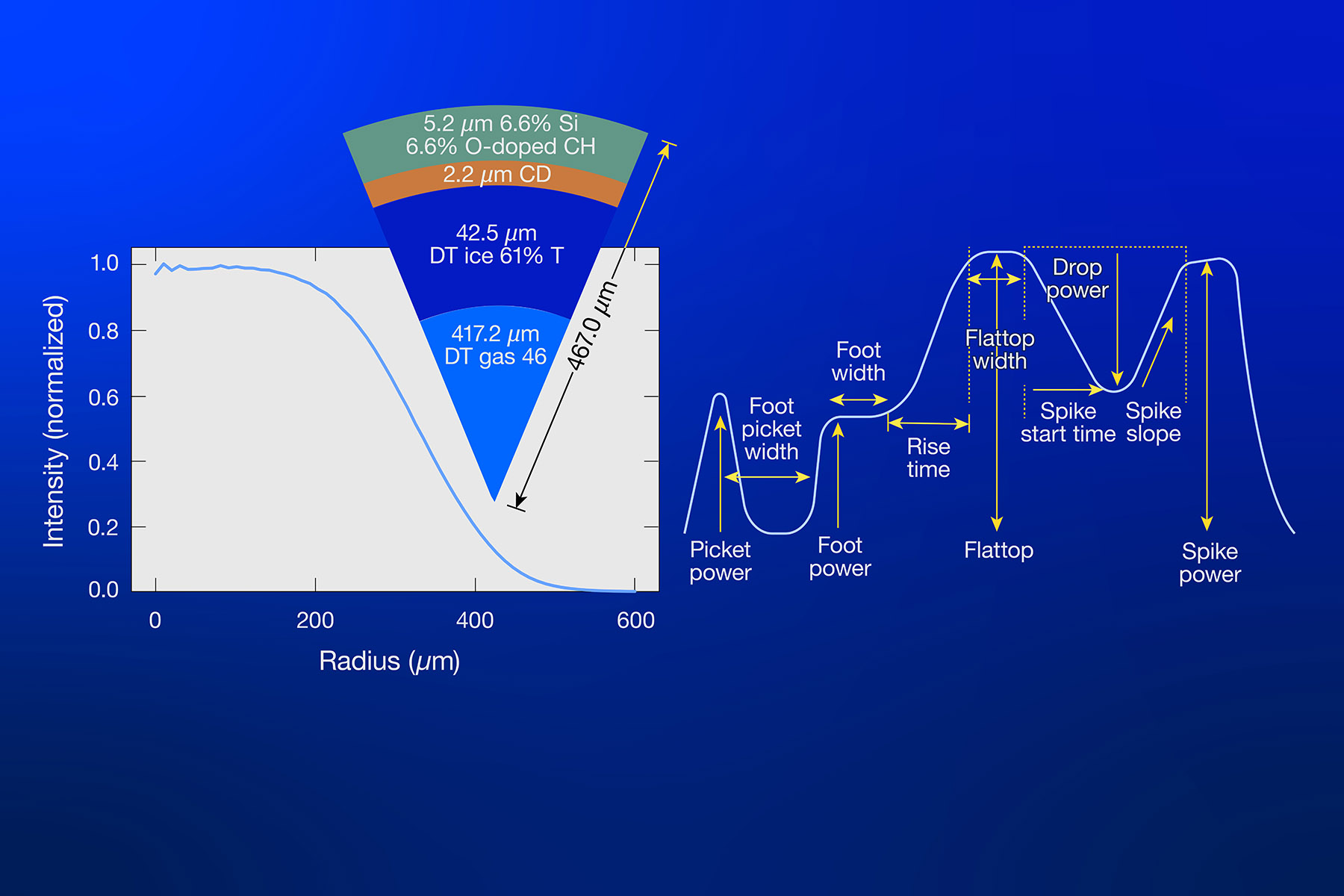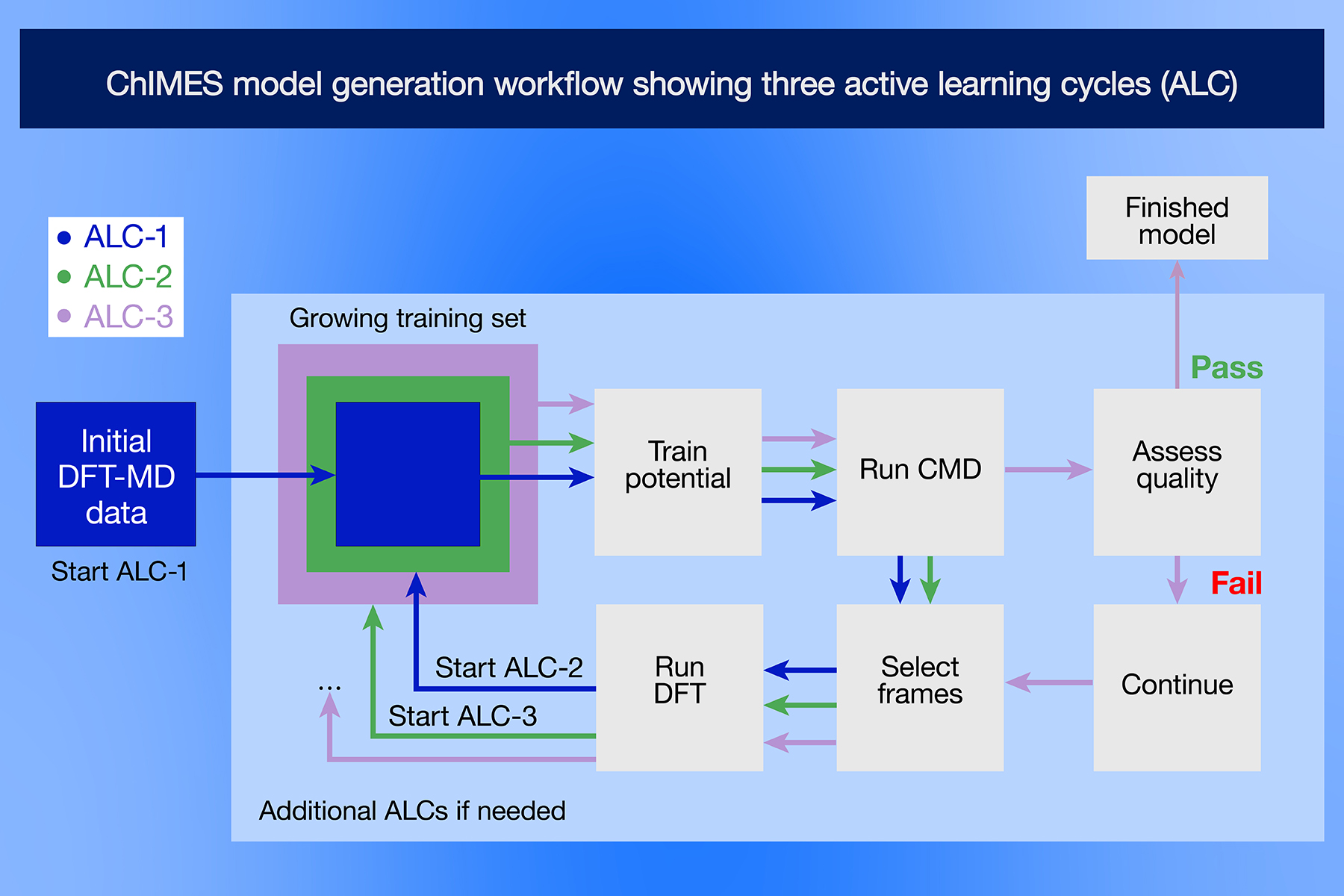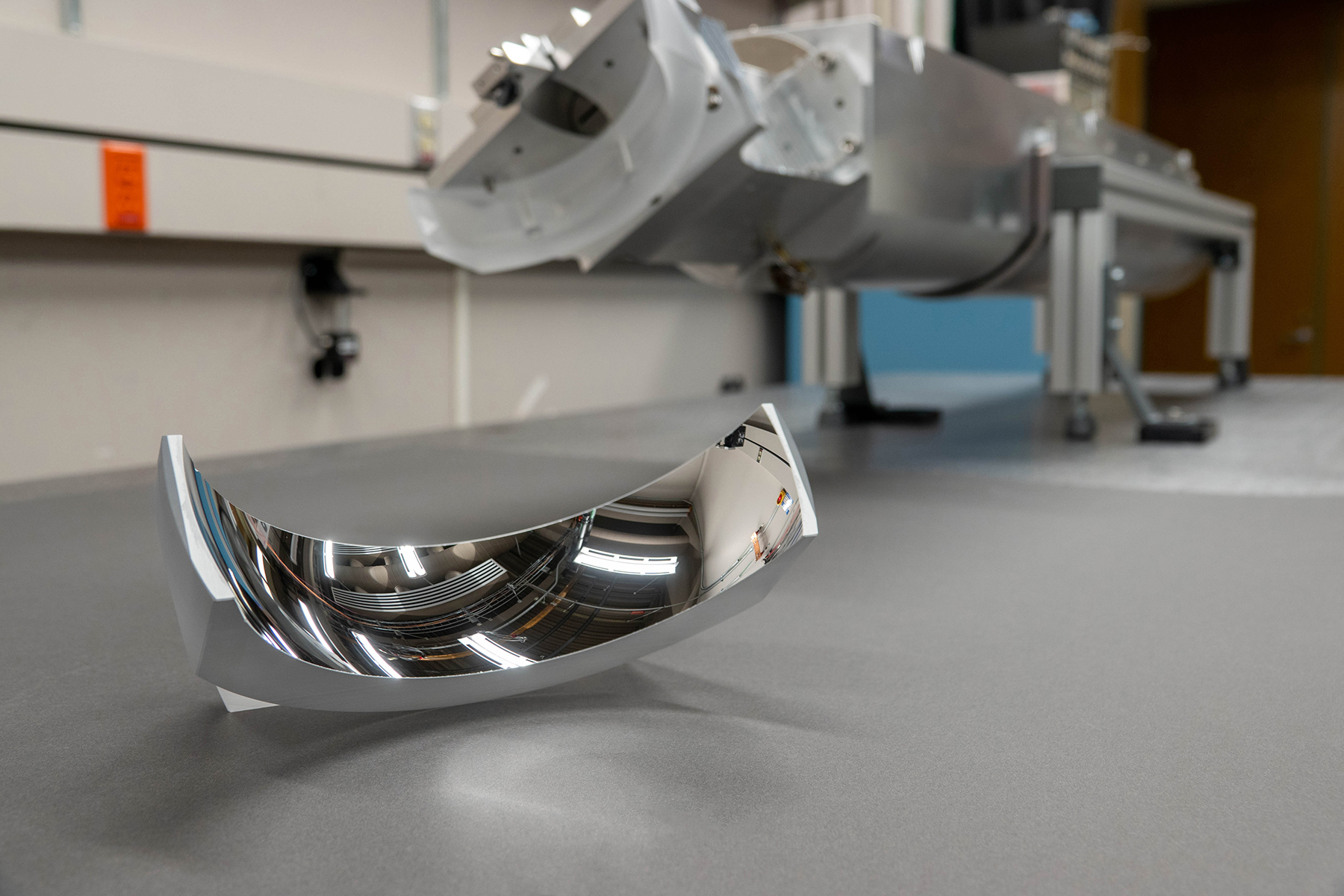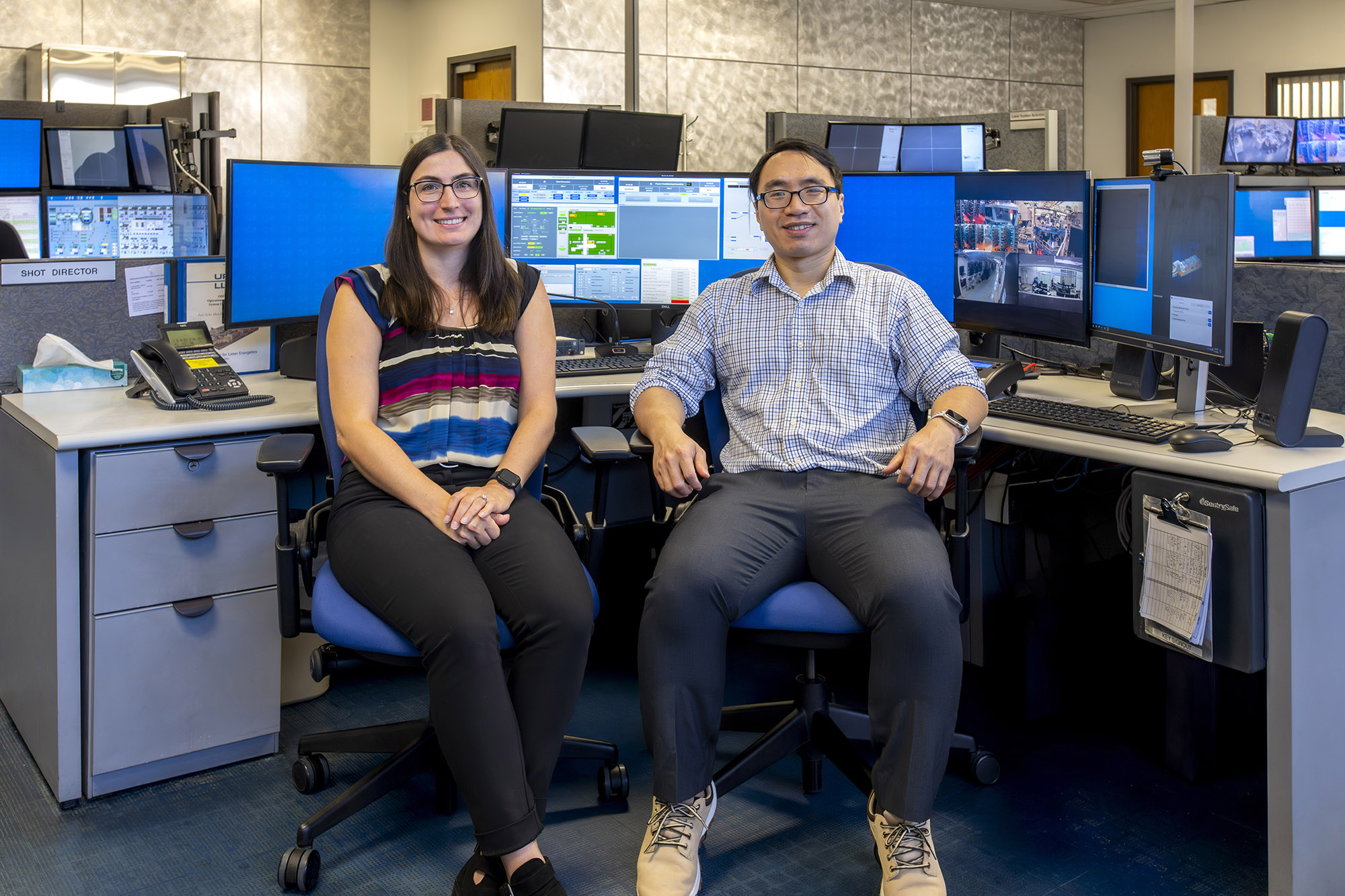Real-Time Laser Performance Modeling
LLE uses advanced models to predict how high-power lasers behave – capturing their energy output, pulse shapes, and beam profiles. Future lasers for fusion energy will need to operate at much higher repetition rates, on the order of 10 shots per second, which demands real-time prediction and control of laser parameters. Our researchers have shown that data-driven methods, such as deep learning, can learn from experimental data and capture important effects that are difficult or impractical to include in purely physics-based simulations. By integrating physics-based understanding with these data-driven models, we aim to create accurate, real-time predictive tools that will enable the reliable, high-speed operation required to make fusion a viable energy source.




